ChatGPT:Yazd, Iran, is a historic city located in the central part of the country, renowned for its unique Persian architecture and desert landscape. It’s one of the oldest continuously inhabited cities in the world, with a history dating back over 5,000 years. Yazd is famous for its windcatchers, or “badgirs,” which are traditional ventilation systems designed to cool buildings. The city is also known for its Zoroastrian heritage, housing important sites like the Towers of Silence and the Fire Temple, where a flame has been burning for over 1,500 years. The historic city of Yazd is a UNESCO World Heritage site, celebrated for its mud-brick architecture, labyrinthine alleyways, and vibrant bazaars.
Yazd’s origin and history are deeply rooted in ancient Persia, It has developed through various historical periods, each leaving a distinct mark on its cultural and architectural landscape.
Origin and Early History
- Pre-Islamic Period:
- Elamite and Median Eras: Yazd’s earliest history is linked to the Elamite civilization and later to the Medes, who established the city as a significant settlement due to its strategic location on the Silk Road.
- Achaemenid and Sassanian Periods: During these periods, Yazd flourished as a hub of commerce and culture. The city became a refuge for Zoroastrians fleeing the Arab Muslim conquest of Persia.
Islamic Period
- Early Islamic Era:
- After the Arab conquest in the 7th century, Yazd gradually adopted Islam while preserving its Zoroastrian community. The city maintained its significance due to its strategic position and thriving trade.
- Mongol Invasion:
- In the 13th century, the Mongol invasion brought significant destruction, but Yazd’s resilience led to a period of reconstruction and development under the Ilkhanate.
Medieval and Modern History
- Timurid and Safavid Eras:
- Yazd experienced prosperity during these periods, marked by the construction of numerous architectural masterpieces, including mosques, madrasas, and caravanserais. The city became a center for silk weaving and other crafts.
- Qajar and Pahlavi Dynasties:
- In the 19th and early 20th centuries, Yazd continued to develop, with modern infrastructure slowly being integrated while maintaining its traditional character.
Development and Preservation
- Contemporary Period:
- Today, Yazd is celebrated for its well-preserved historic architecture and cultural heritage. The city has adapted to modernity while preserving its unique identity, becoming a UNESCO World Heritage site in 2017.
- Urban Development: Modern Yazd has seen the development of infrastructure such as roads, educational institutions, and healthcare facilities, balancing growth with the preservation of its historic core.
Cultural Significance
- Zoroastrian Heritage:
- Yazd remains a vital center for Zoroastrian culture, with significant sites like the Towers of Silence and the Fire Temple, where a sacred flame has been burning for over 1,500 years.
- Architectural Marvels:
- The city’s architecture is renowned for its ingenious use of windcatchers (badgirs) and qanats (underground aqueducts), which showcase the ingenuity of traditional Persian engineering in adapting to the harsh desert environment.
Yazd is rich in historical monuments and tourist attractions that reflect its long history and cultural heritage. Here is a list of some of the most notable sites:
Historical Monuments
- Jameh Mosque of Yazd:
- An iconic 12th-century mosque known for its stunning tile work and one of the tallest minarets in Iran.
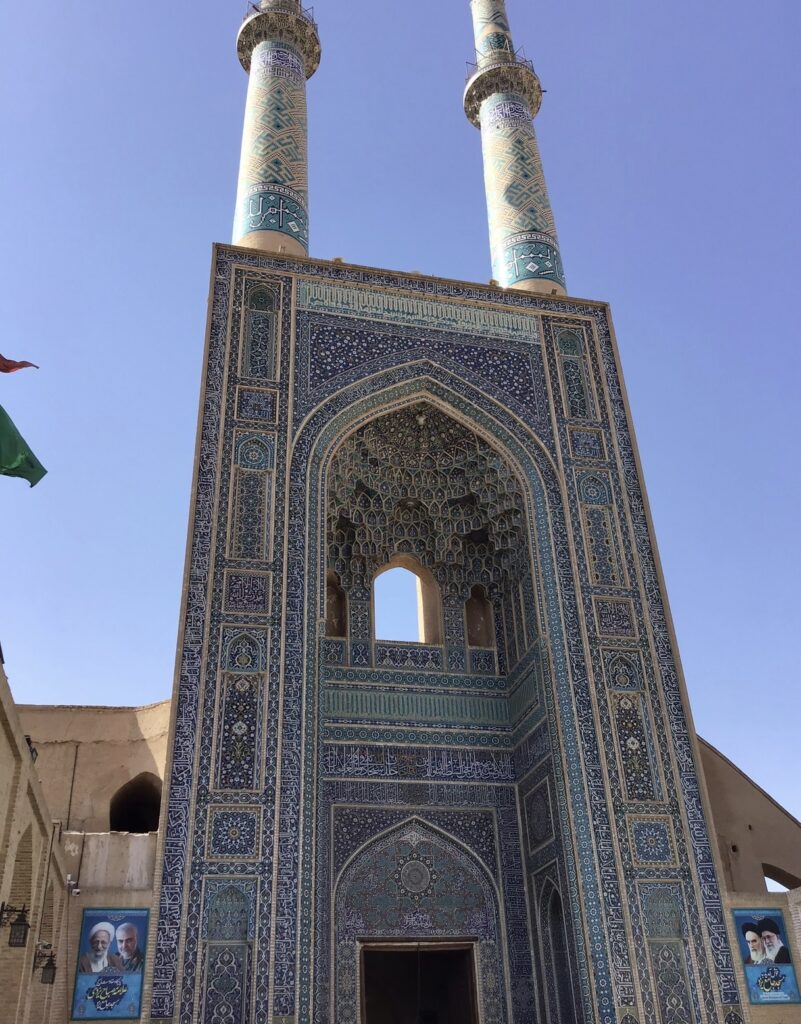
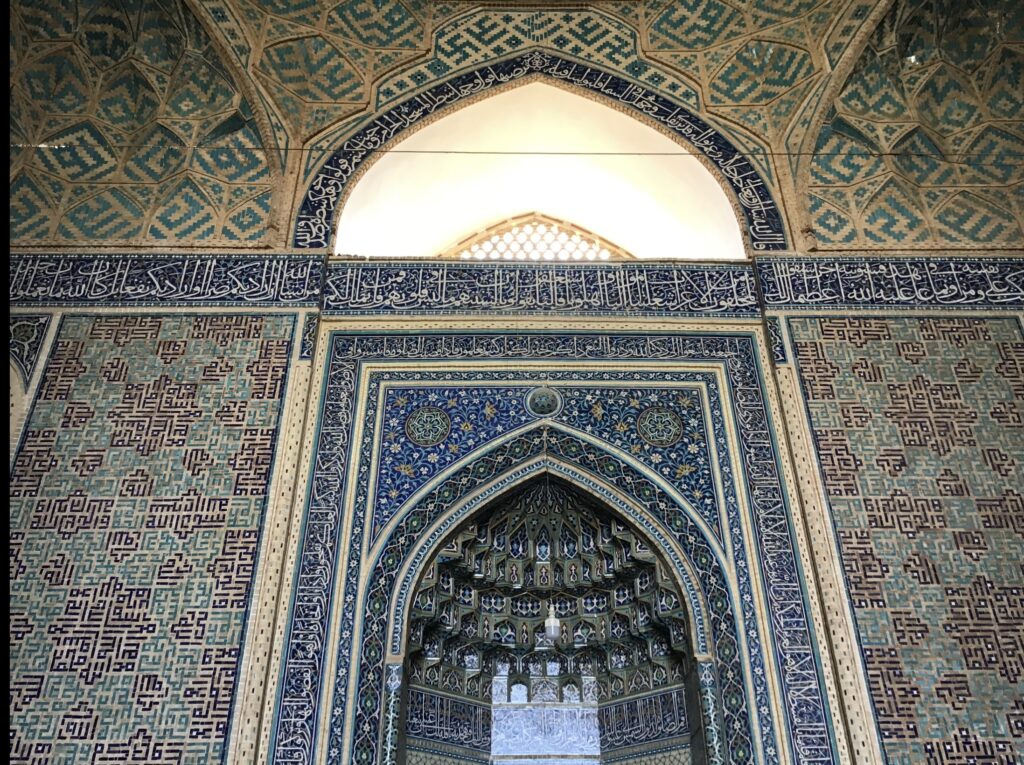
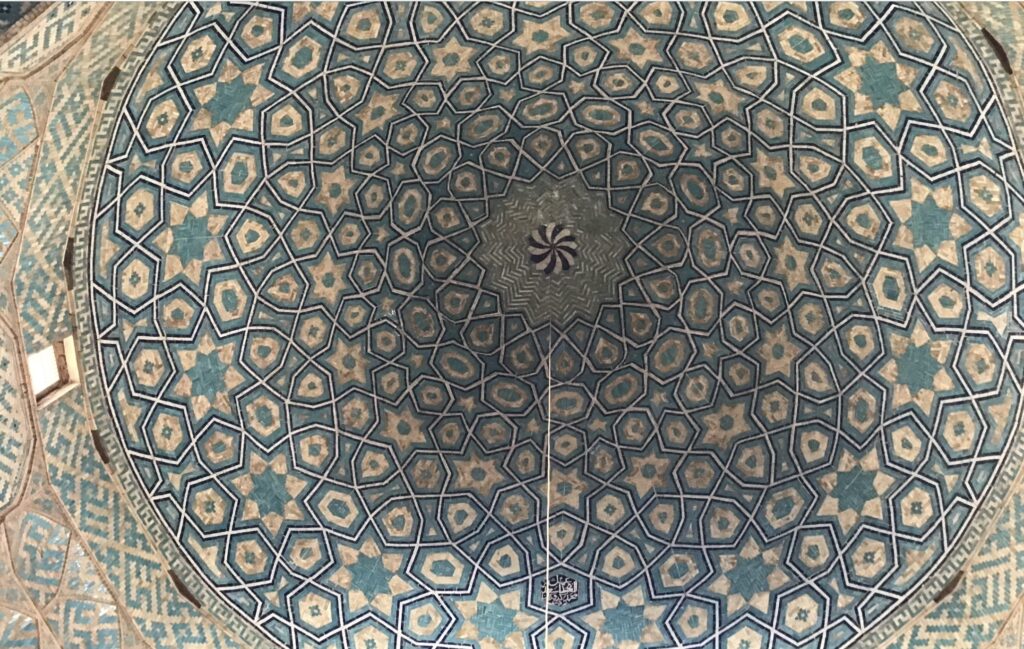
- Amir Chakhmaq Complex:
- A prominent structure with a mosque, a square, a caravanserai, a bathhouse, a cold water well, and a tekyeh used for Shia ceremonies.
- Dolat Abad Garden:
- A beautiful Persian garden with the tallest windcatcher in Iran, showcasing traditional Persian garden design.
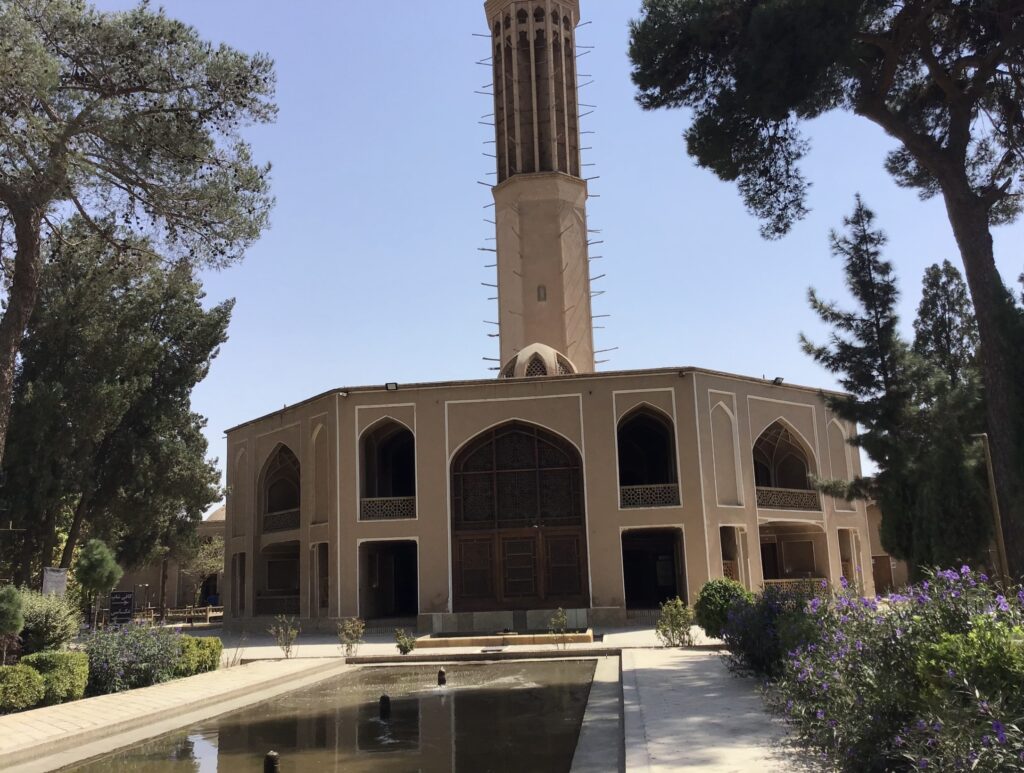
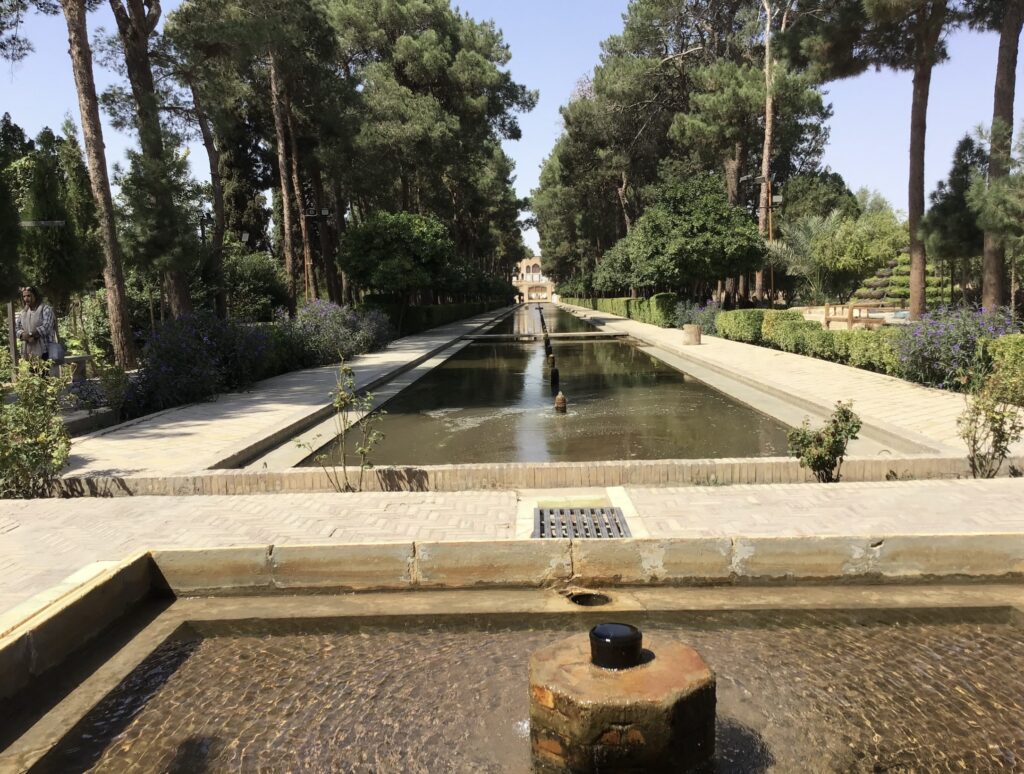
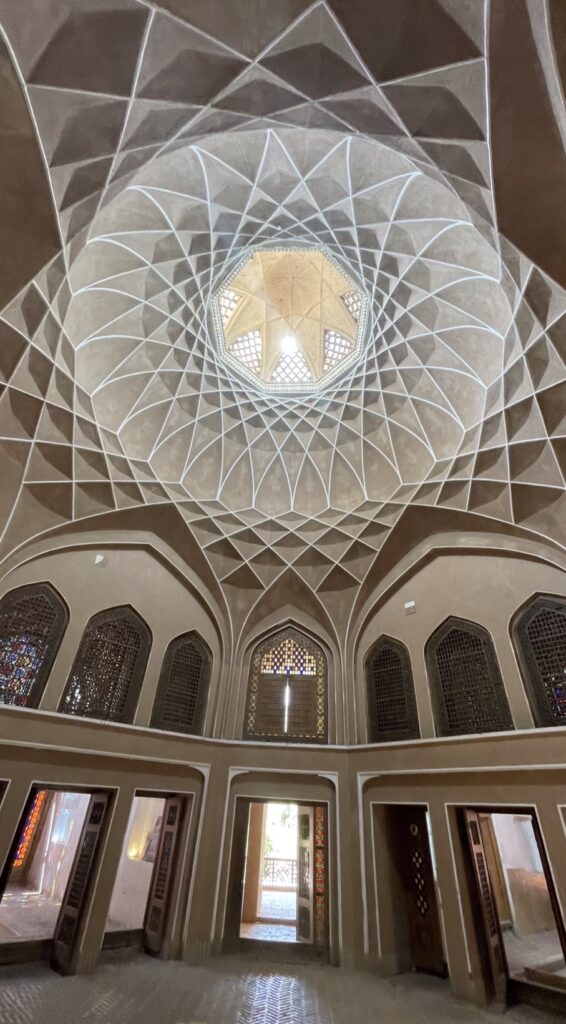
- Towers of Silence (Dakhmeh):
- Ancient Zoroastrian structures used for sky burials located on the outskirts of Yazd.
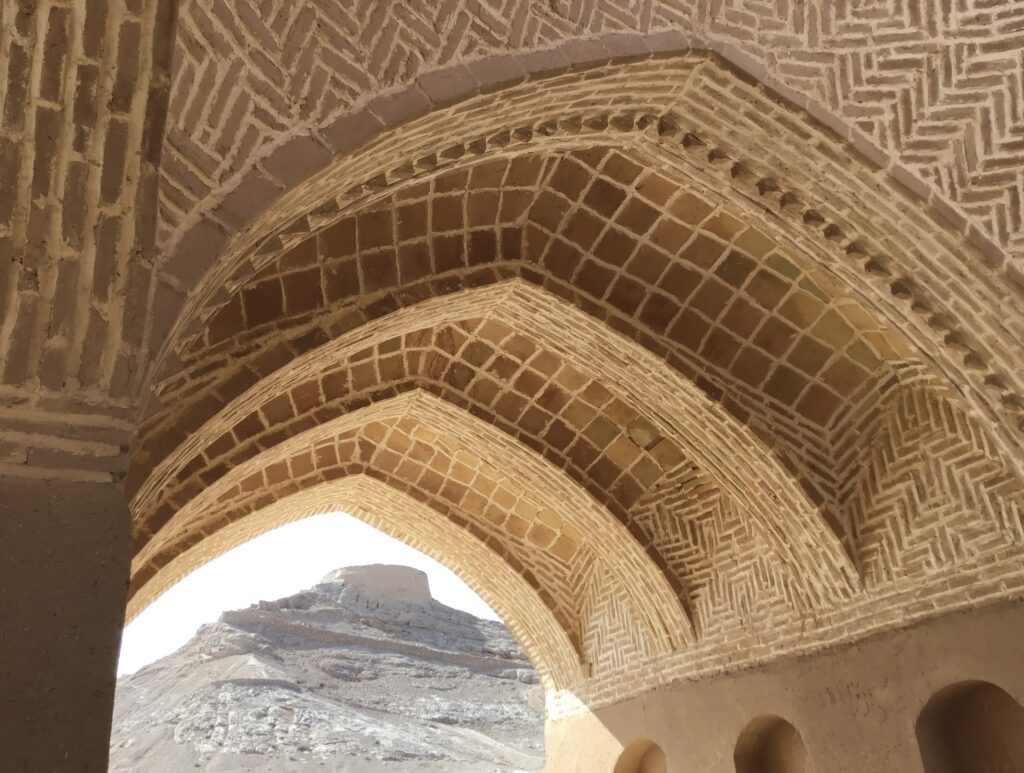
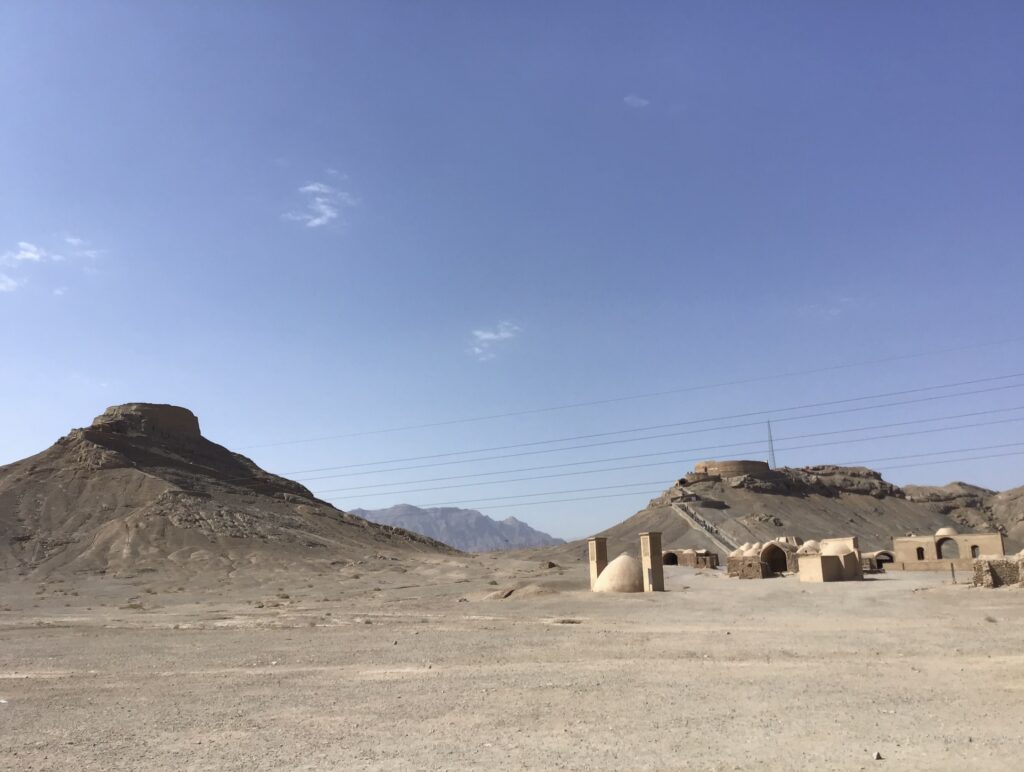
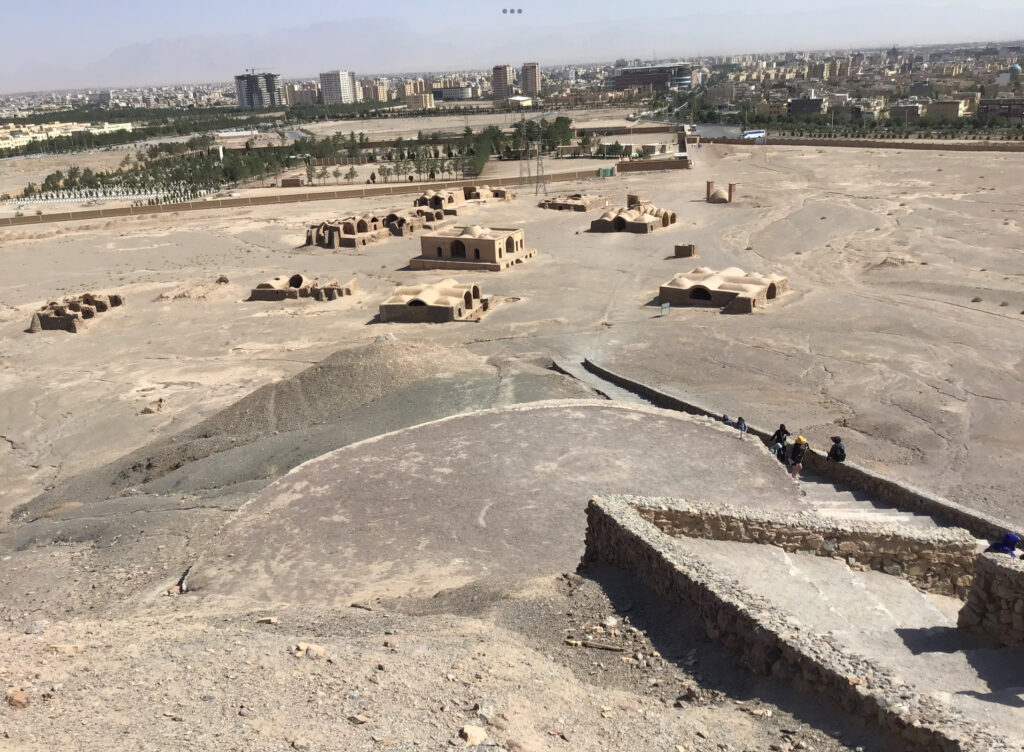
- Yazd Atash Behram (Fire Temple):
- A Zoroastrian fire temple that houses a flame said to have been burning since 470 AD.
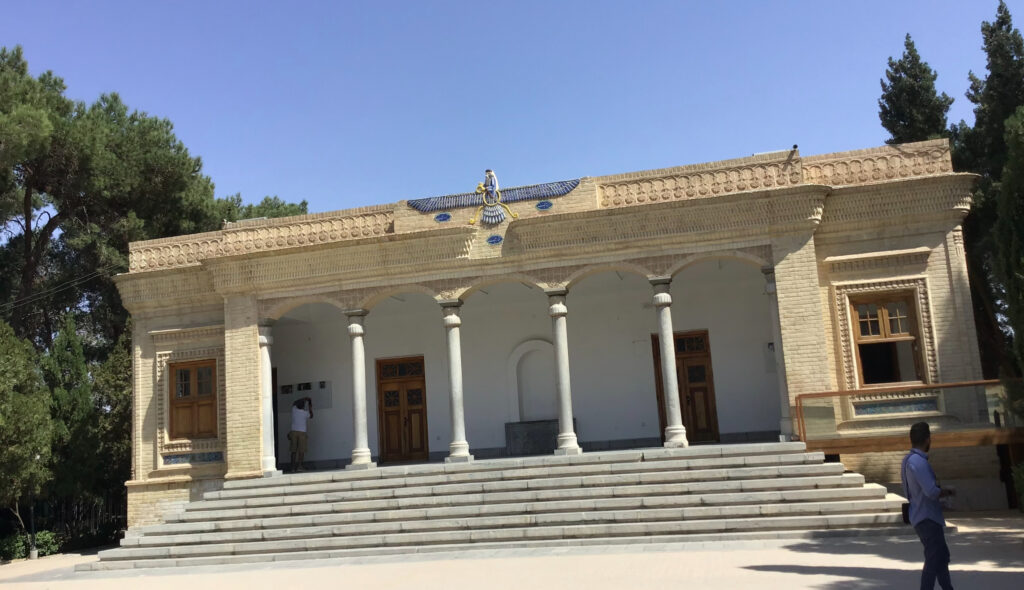
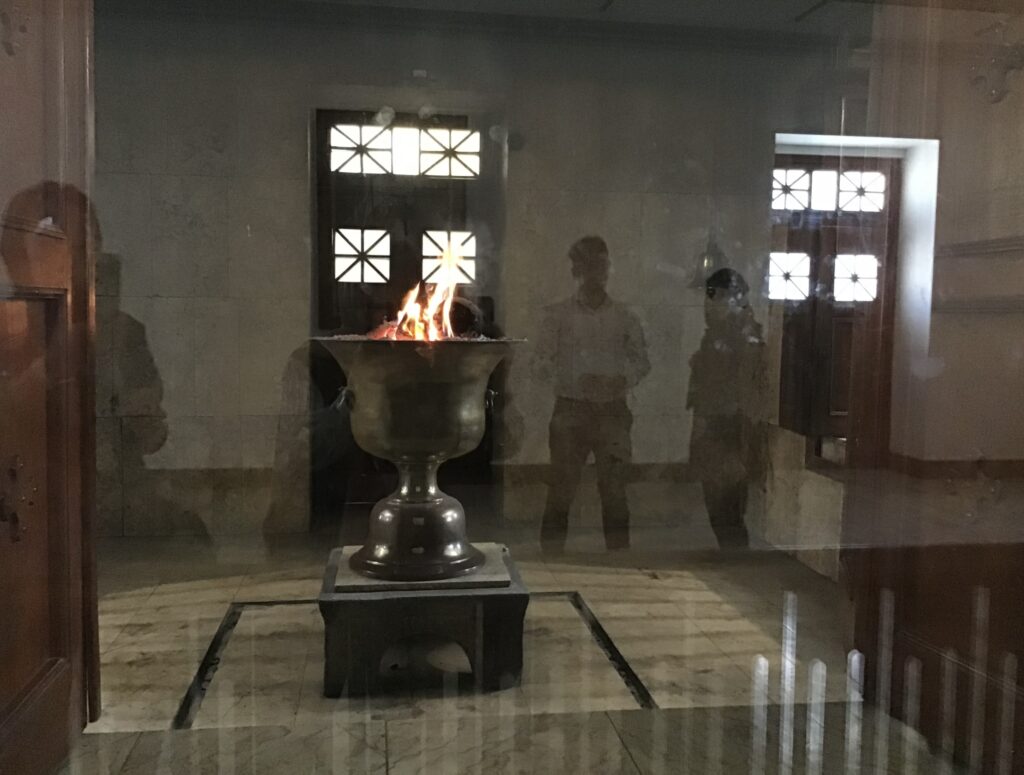
- Alexander’s Prison (Zendan-e Eskandar):
- A historic site that, according to legend, was used as a prison by Alexander the Great.
- Yazd Water Museum:
- A museum dedicated to the ancient water management systems, particularly the qanats, which have been crucial for the desert city’s survival.
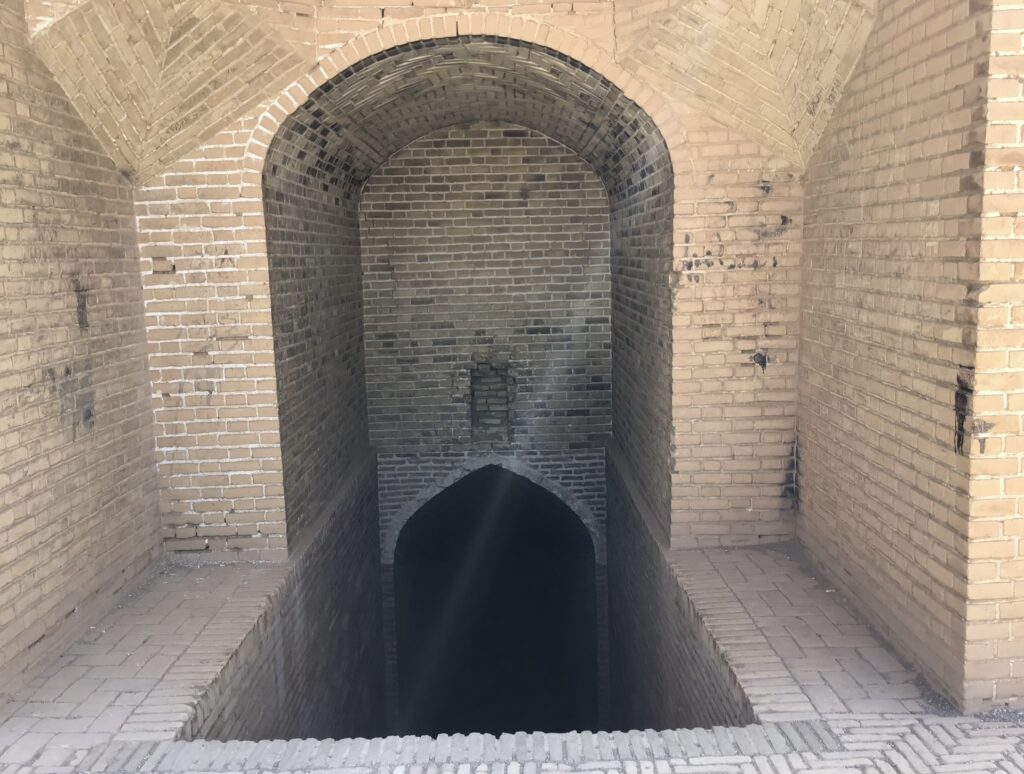
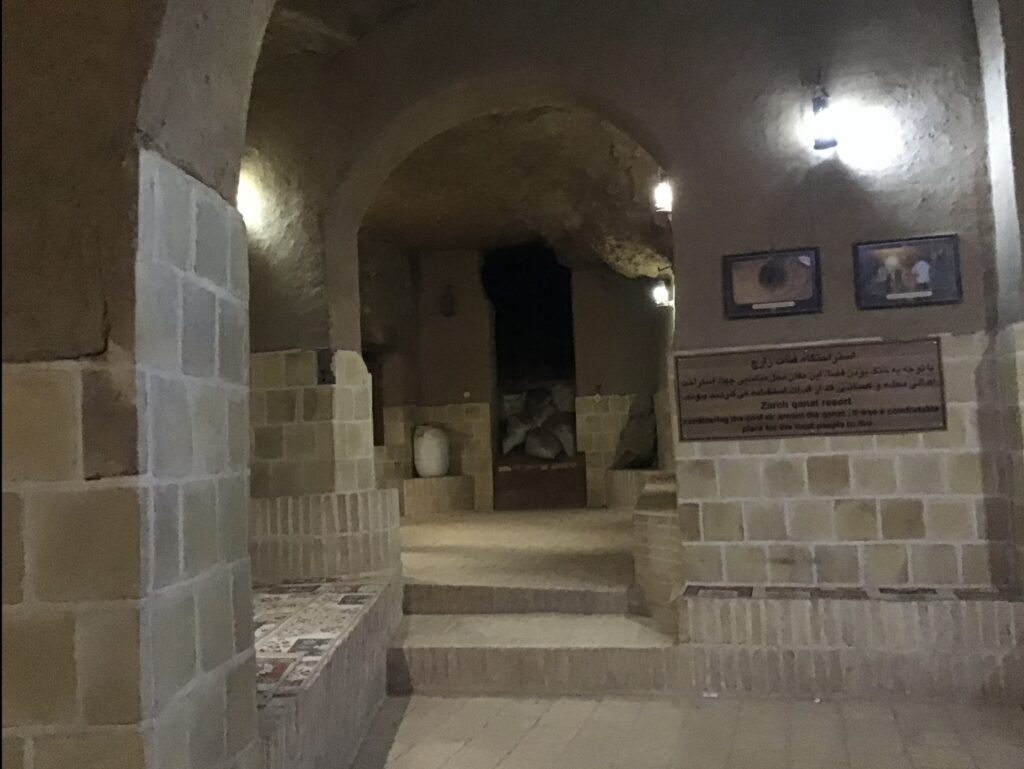
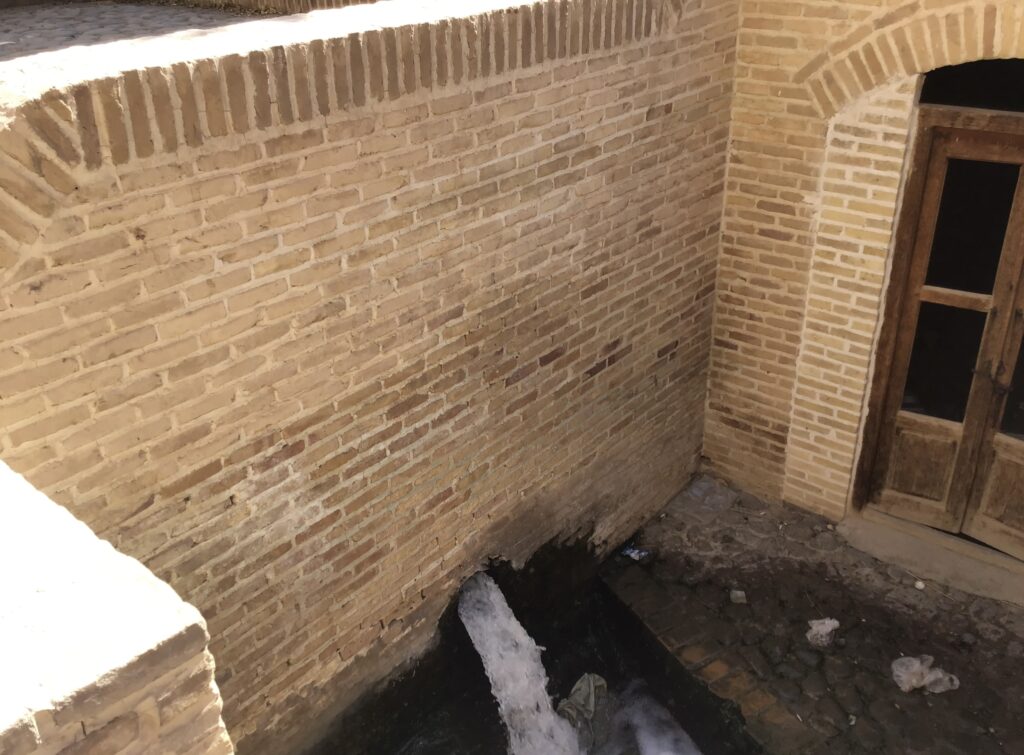
- Fahadan Historical Neighborhood:
- A UNESCO-listed area with narrow alleyways, traditional mud-brick houses, and historical buildings.
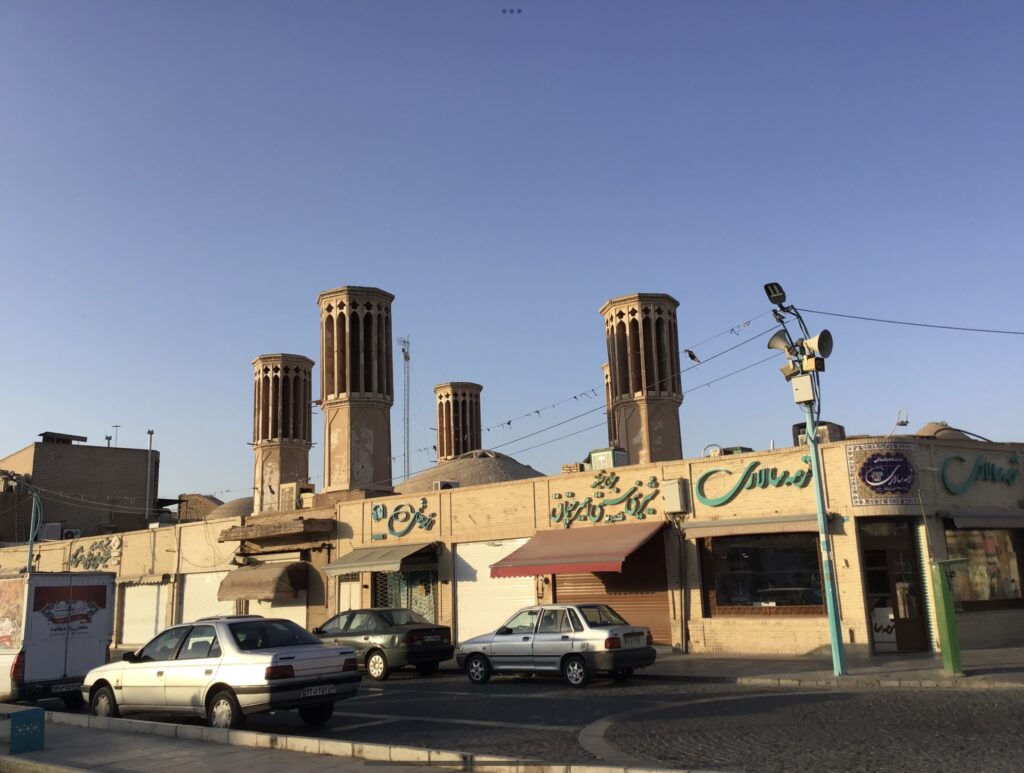
Tourist Attractions
- Kharanaq Village:
- An ancient village with over 1,000 years of history, featuring mud-brick houses, a caravanserai, and a bridge.
- Chak Chak (Pir-e Sabz):
- A significant Zoroastrian pilgrimage site located in the mountains, known for its sacred spring.
- Zoroastrian Towers of Silence:
- Additional sites outside the city used for the Zoroastrian ritual of exposing the dead.
- Sar Yazd Castle:
- A well-preserved mud-brick castle from the Sassanian era, used historically as a fortress and a place of refuge.
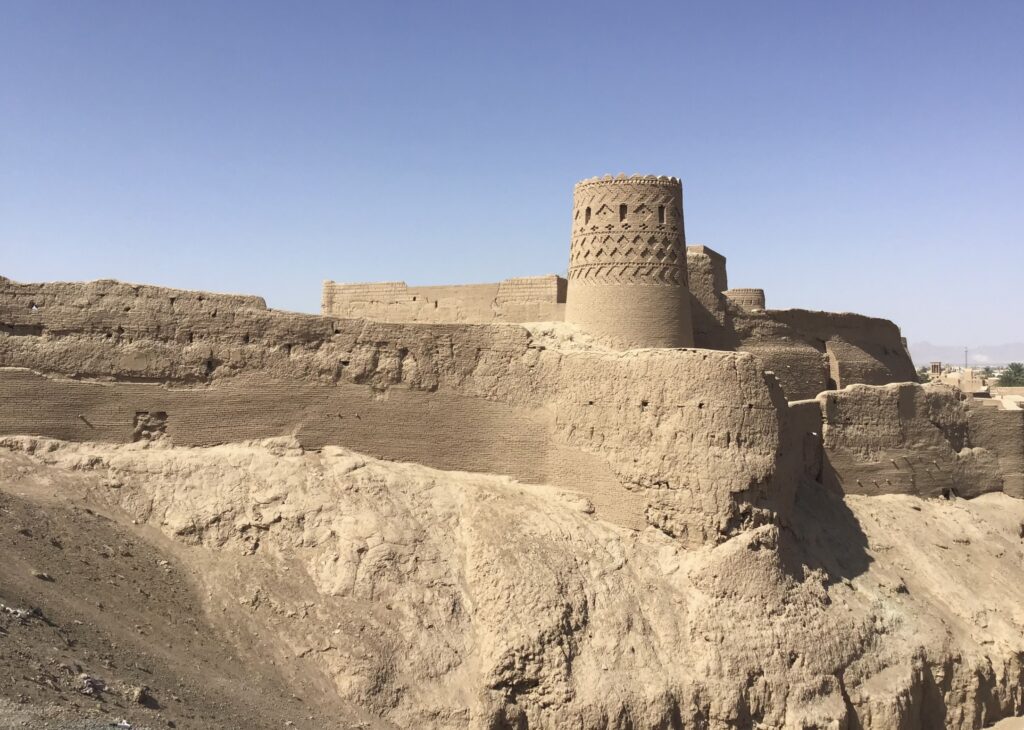
- Lariha House:
- A beautiful traditional house exemplifying the architectural style of the Qajar period, now a museum.
- Zein-o-Din Caravanserai:
- A well-preserved 16th-century caravanserai that now serves as a unique hotel for tourists.
- Markar Clock Tower:
- A historic clock tower located in Markar Square, symbolizing the city’s modern development in the early 20th century.
- Yazd Art House:
- A cultural center and café where visitors can enjoy traditional and contemporary art.
These sites and attractions make Yazd a fascinating destination, offering a deep dive into Persian history, architecture, and culture.
Qanat
Usages
- Water Supply:
- Qanats are primarily used to provide a reliable source of water for irrigation, drinking, and household use in arid and semi-arid regions.
- Agriculture:
- They are essential for irrigating crops, particularly in regions with limited surface water, enabling the cultivation of various crops and supporting local agriculture.
- Urban Water Supply:
- In historical cities, qanats have been a critical infrastructure for supplying water to urban populations, supporting daily activities and public baths.
Engineering History
- Origin:
- The qanat system originated in ancient Persia around 3,000 years ago, during the early first millennium BCE. It represents one of the most significant ancient engineering achievements.
- Structure:
- A qanat consists of a series of vertical shafts connected by a gently sloping tunnel that transports water from an underground aquifer to the surface. The shafts are used for construction, maintenance, and ventilation.
- Construction:
- The construction of a qanat requires precise engineering to ensure the correct gradient for water flow without excessive erosion. It often involves digging by hand and using simple tools.
- Distribution:
- Qanats spread from Persia to other parts of the Middle East, North Africa, and even parts of Europe, adapted to various geographical conditions.
Wind-Catchers (Badgirs)
Usages
- Cooling:
- Wind-catchers are used to naturally ventilate and cool buildings in hot and arid climates. They capture and direct cooler air into buildings while expelling warmer air.
- Ventilation:
- They help maintain air circulation, improving indoor air quality by reducing humidity and removing odors.
- Temperature Regulation:
- Wind-catchers contribute to passive temperature regulation, reducing the need for mechanical cooling systems and making buildings more energy-efficient.
Engineering History
- Origin:
- Wind-catchers have been used for thousands of years, with origins tracing back to ancient Persia and Egypt. The earliest evidence dates to around 4,000 years ago.
- Structure:
- A typical wind-catcher consists of a tall, vertical structure with openings at the top to capture wind. The air is funneled down through internal channels into the building. Some wind-catchers have multiple directional openings to capture wind from different directions.
- Function:
- The design varies based on climatic needs. In hot and dry climates, wind-catchers direct airflow over water or through underground channels to cool the air. In humid regions, they focus on enhancing ventilation.
- Modern Adaptations:
- Modern architecture sometimes incorporates wind-catcher principles to enhance energy efficiency in sustainable building designs. Contemporary versions often integrate with HVAC systems.
Summary
Qanats and wind-catchers are remarkable examples of ancient Persian engineering that have significantly influenced water management and building cooling techniques. The qanat system ensures a continuous water supply in arid regions, enabling agriculture and urban development. Wind-catchers provide natural cooling and ventilation, enhancing living conditions in hot climates. Both systems exemplify sustainable practices adapted to harsh environmental conditions, showcasing the ingenuity and resourcefulness of ancient engineers.
Two-Day Itinerary for Visiting Yazd
Day 1: Historical Monuments and Local Cuisine
Morning:
- Jameh Mosque of Yazd
- Start your day at this iconic mosque, known for its stunning tile work and one of the tallest minarets in Iran.
- Breakfast: Try a local breakfast dish, such as Halim (a wheat and meat porridge) at a nearby traditional café.
- Amir Chakhmaq Complex
- Explore the complex, which includes a mosque, a square, and other historical structures.
- Mid-Morning Snack: Enjoy Yazdi sweets like Qottab (deep-fried pastries filled with almonds) from a local bakery.
Afternoon:
- Dolat Abad Garden
- Visit this beautiful Persian garden with the tallest windcatcher in Iran.
- Lunch: Have a meal at a traditional restaurant near the garden, and try Dizi (a hearty stew of lamb, chickpeas, and potatoes) or Fesenjan (a rich pomegranate and walnut stew with chicken).
- Yazd Water Museum
- Learn about the ancient water management systems, particularly the qanats, which have been crucial for the desert city’s survival.
Evening:
- Fahadan Historical Neighborhood
- Wander through this UNESCO-listed area with narrow alleyways, traditional mud-brick houses, and historical buildings.
- Dinner: Enjoy a traditional Persian dinner at a local restaurant. Try Kabab (grilled meat) and Tahchin (a savory saffron rice cake).
Night:
- Stay at Zein-o-Din Caravanserai
- Spend the night at this well-preserved 16th-century caravanserai, offering a unique and authentic experience.
Day 2: Cultural Exploration and Local Delights
Morning:
- Towers of Silence (Dakhmeh)
- Start your day with a visit to these ancient Zoroastrian structures used for sky burials.
- Breakfast: Have a traditional Persian breakfast with fresh bread, cheese, and a variety of jams at a nearby café.
- Yazd Atash Behram (Fire Temple)
- Visit this Zoroastrian fire temple that houses a flame said to have been burning since 470 AD.
Afternoon:
- Kharanaq Village
- Take a short trip to this ancient village with over 1,000 years of history, featuring mud-brick houses and a caravanserai.
- Lunch: Enjoy a picnic with local specialties like Baghali Polo (rice with dill and fava beans) and fresh fruit.
- Chak Chak (Pir-e Sabz)
- Visit this significant Zoroastrian pilgrimage site located in the mountains, known for its sacred spring.
Evening:
- Markar Clock Tower
- Return to Yazd and visit the historic clock tower located in Markar Square.
- Dinner: End your day with a meal at a traditional Yazdi restaurant, trying local dishes like Shooli (a Yazdi soup made with vegetables and herbs) and Mast-o-Khiar (a refreshing yogurt and cucumber dish).
Night:
- Yazd Art House
- Spend the evening at this cultural center and café, where you can enjoy traditional and contemporary art along with some Yazdi tea and pastries.
Additional Tips
- Local Markets: Take some time to explore the local bazaars for souvenirs and to experience the vibrant market culture of Yazd.
- Dress Code: Ensure to dress modestly, respecting local customs, especially when visiting religious sites.
- Transportation: Use local taxis or arrange for a private tour guide to navigate the city and surrounding areas conveniently.
This itinerary offers a balanced mix of historical exploration, cultural experiences, and the delight of tasting local Yazdi cuisine, providing a comprehensive and memorable visit to Yazd.
